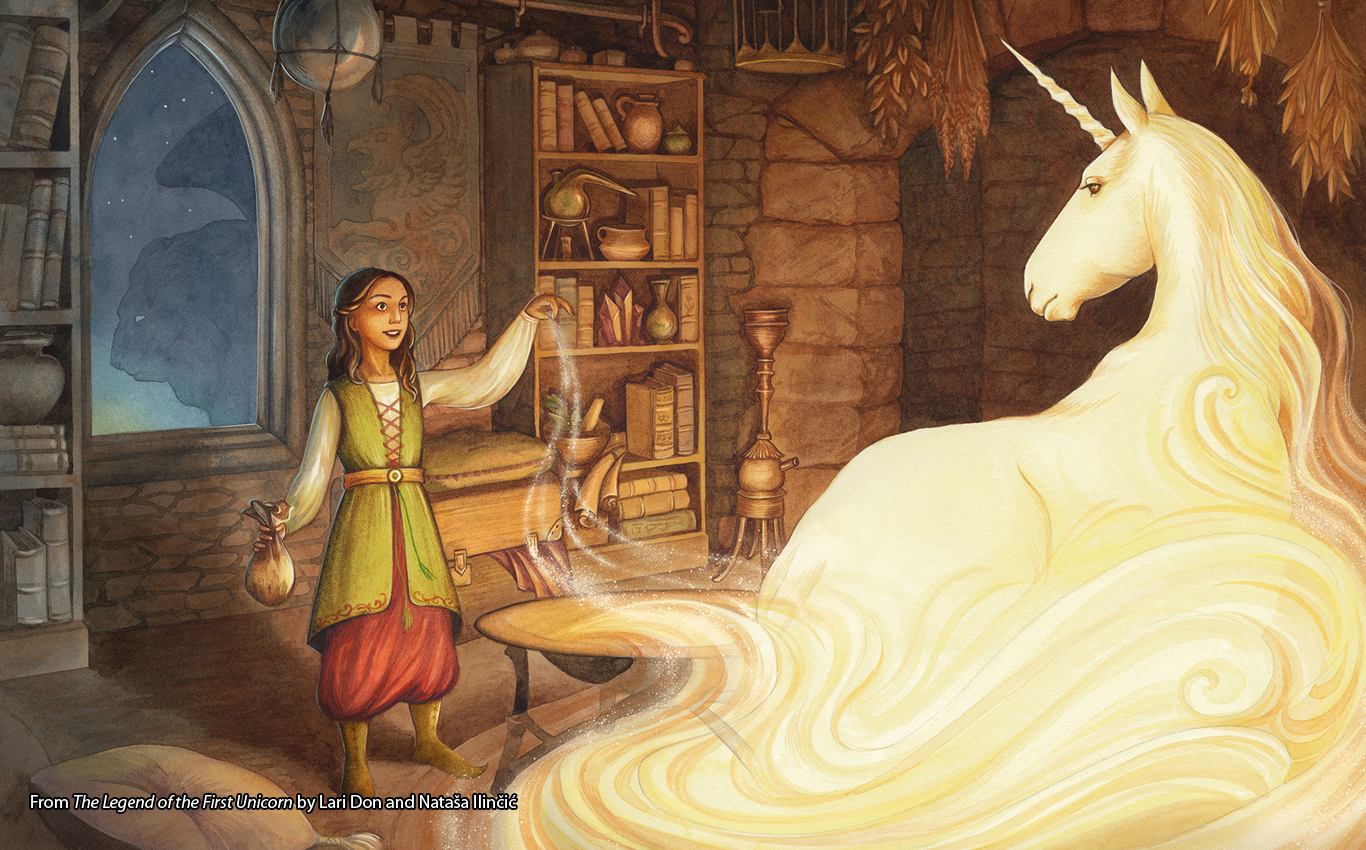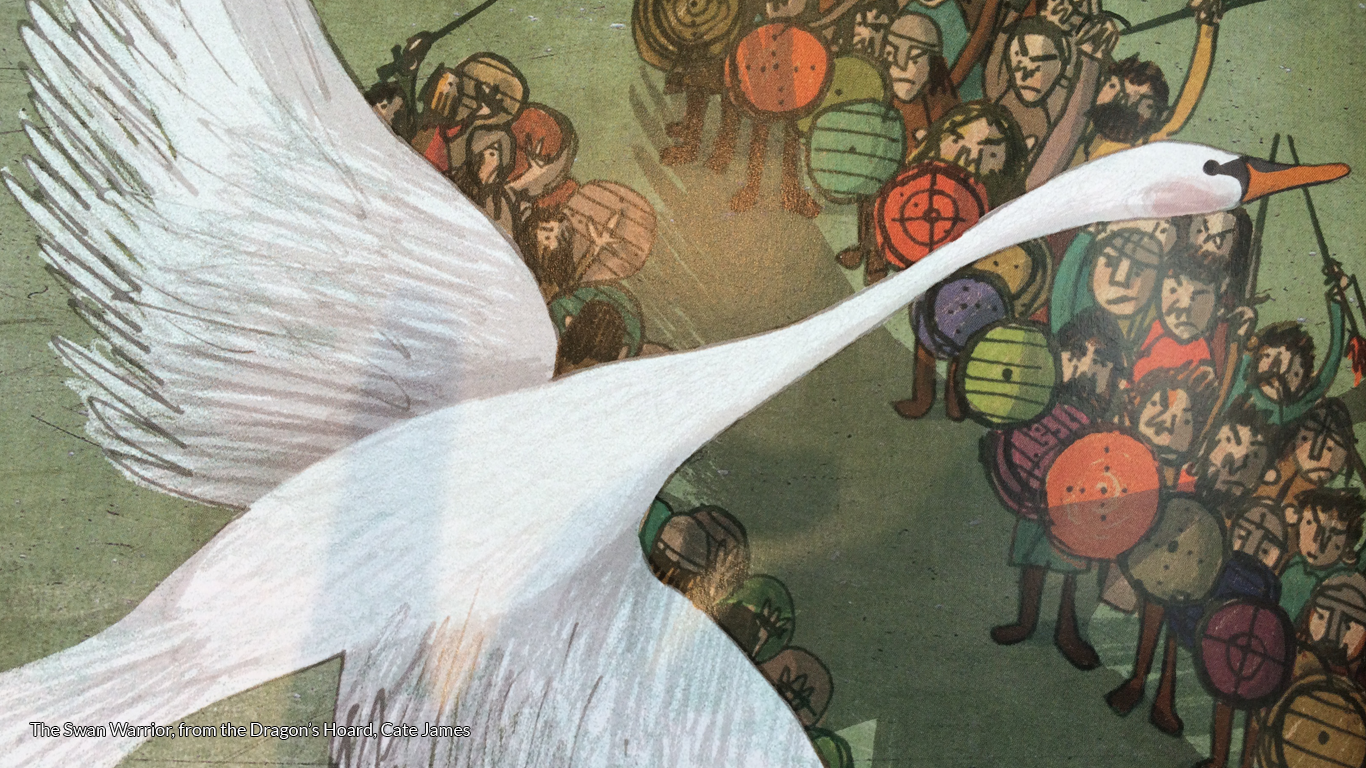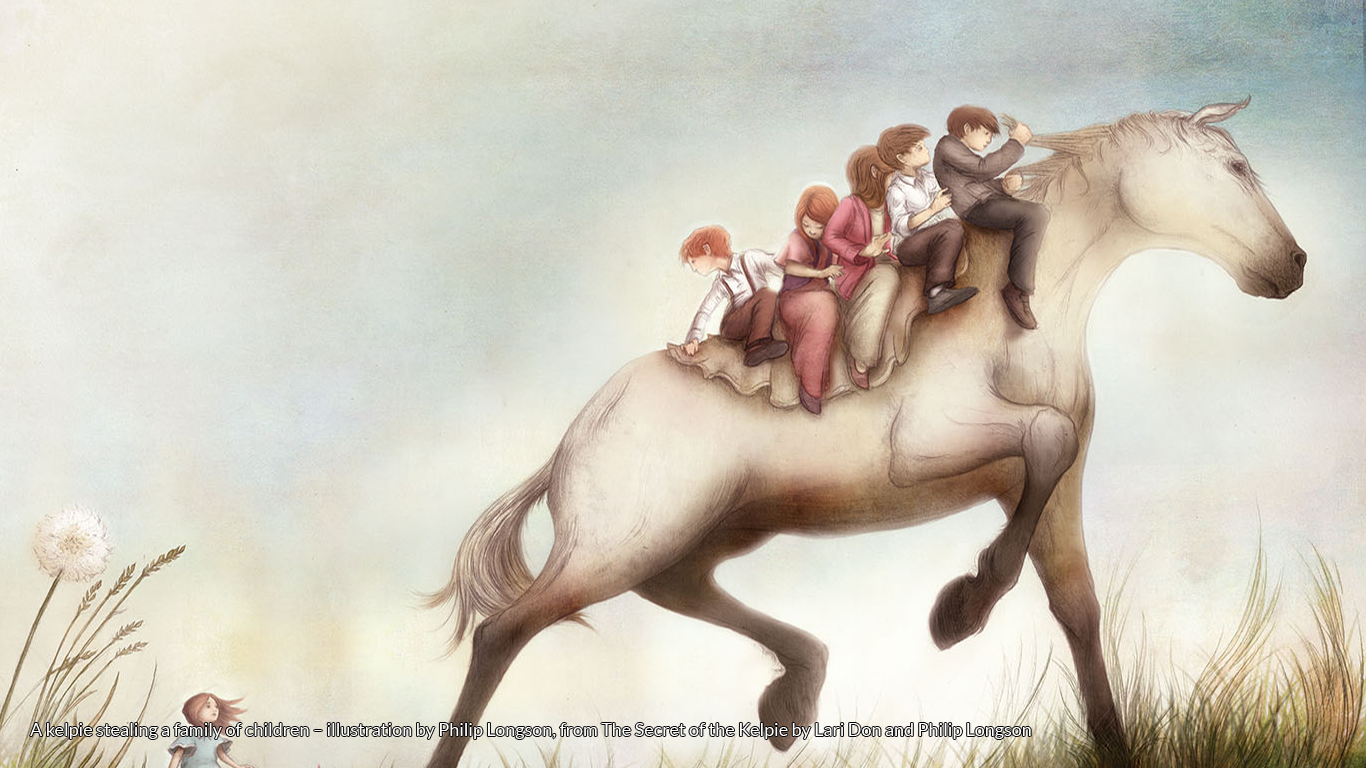Scotland is one of the few nations to have chosen a mythological creature rather than a real one as her national animal, and probably the only nation to have chosen an animal that no one believed actually lived there…
Because Scotland’s national animal is the unicorn.
So, why does Scotland have an imaginary creature as its national animal, and where do the unicorn, its stories and its lore actually come from?
Unicorns are traditionally elusive, hunted unsuccessfully through forests, requiring the intervention of convenient maidens to capture them. And unicorn stories are almost as elusive…
When the Scottish royal family adopted the unicorn as a symbol of strength and purity in medieval times — resulting in unicorn statues and heraldic symbols in castles and town squares all over Scotland — they were identifying with a powerful animal they genuinely believed existed. They thought the unicorn was a real animal, which lived somewhere else.
But where else?
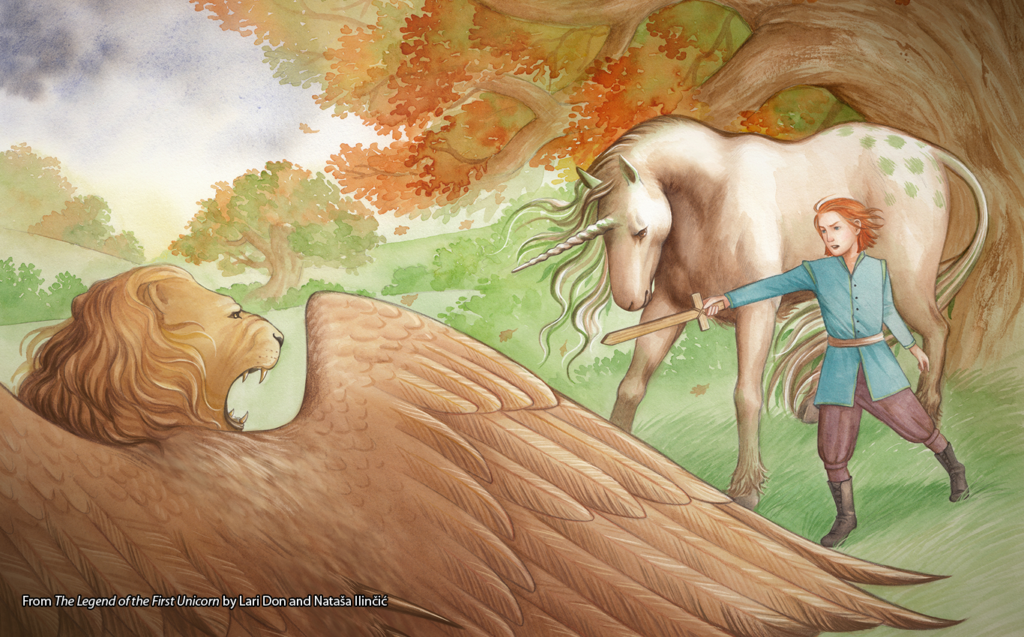
Unicorn stories and lore have a wide geographical spread:
There’s a Chinese legend about a multi-coloured one-horned creature which foretold great events. The single-horned Qi Lin was red, yellow, blue, white and black, so it didn’t look like the elegant subtly-coloured beast we associate with the word ‘unicorn’ nowadays. But it did have a gentle nature, never stepping on living grass or eating a living creature. The Qi Lin appeared to herald the birth of emperors and also the birth of the great sage Confucius.
There’s a Ukrainian folktale about a boastful unicorn refusing to go on the ark, then managing to swim for forty days and nights, but when birds were sent out to find land, one perched on the unicorn’s horn, and it sank under the waves, never to be seen again.
There’s the English nursery rhyme about the lion and the unicorn fighting:
The lion and the unicorn
were fighting for the crown,
The lion beat the unicorn
all around the town,
(Then the verse I wasn’t convinced by even as a child, about a carnivore and a herbivore being fed bread and plum cake… )
There’s a Brothers Grimm tale about a brave little tailor which shows a very different side to the unicorn we think we know today: our hero is set the task of capturing a fearsome and violent unicorn, and succeeds by tricking it into charging towards a tree, so that its horn gets stuck and it’s easy to capture.
This tale is probably related to an ancient myth, which may be of Babylonian origin, about the lion as the sun and the unicorn as the moon, chasing each other across the sky. The lion also tricks the unicorn into impaling its horn on a tree. But this time the unicorn is eaten, rather than captured. The sky chase repeats and repeats, with the sun-lion always winning, as the moon-unicorn wanes and dies, except when there’s an eclipse and the moon-unicorn wins, briefly…
There’s another German folktale about a unicorn who helped a witch escape from soldiers and kill a monk, which is connected with a unicorn cave: the Einhornehohle near Schwarzfeld.
There were several tales that were widespread in Europe hundreds of years ago, but whose origin is hard to pin down, including:
The lore that a unicorn could only be captured by a virgin, with the entirely unsubtle image of the unicorn laying its horned head in her lap.
And the story of a water source being poisoned by a snake’s venom, and the unicorn dipping its horn into the water to magically remove the poison and make the water safe to drink for all the other animals. This may be linked to an ancient Persian myth about a giant ass with one horn standing in the ocean cleansing evil from the water.
This poison-combatting lore led to unicorn-horn cups and ground unicorn horn being sought after by rich folk wanting to protect themselves against attempted poisoning. This valuable trade slowly diminished when it was proved that all those long spiral unicorn horns came not from the exotic east but from the icy north, because they were narwhal tusks. However one tale says that James VI of Scotland and I of England had a more direct way to prove a highly expensive remedy wasn’t effective against poison: he tested poison mixed with unicorn-horn powder on a servant, who fell down dead…
And there are many tall tales from explorers and travellers, from the ancient Greeks onwards, about people tracking down the amazing unicorn, or more often having spoken to someone who had spoken to someone else who claimed that they’d seen a unicorn. Many of these second-hand sightings may have been of the rhinoceros, in Africa and India.
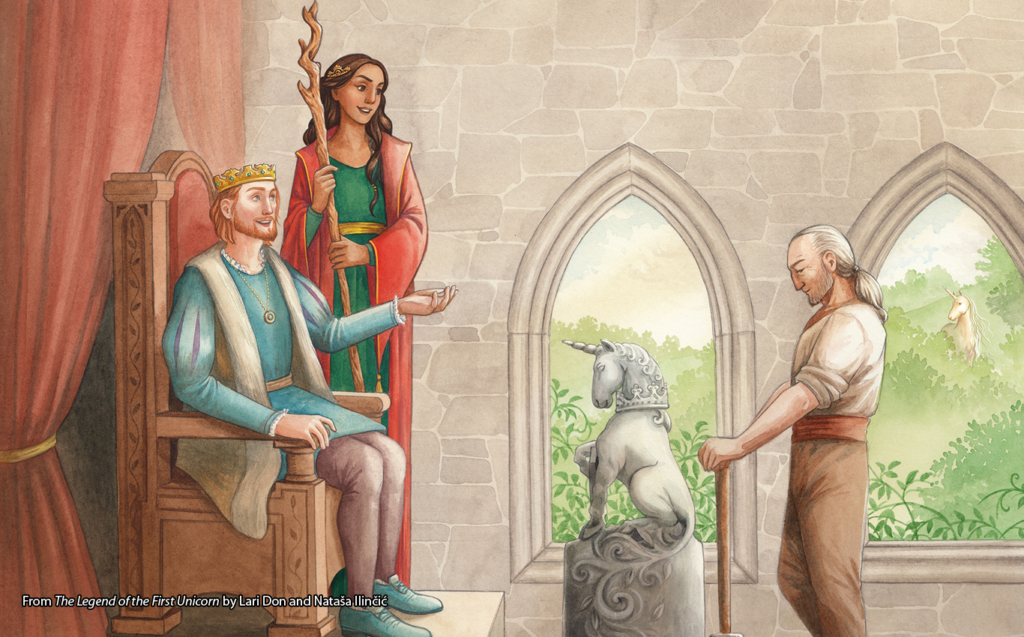
Despite the difficulties of pinning a unicorn down (unless you can persuade it to run into a tree) I have long been determined to tell a Scottish unicorn story. I finally found a wonderful tale from the Scottish Travellers’ community, in The Coming of the Unicorn by Duncan Williamson, about a sad king whose magicians invented a single-horned beast (from bits of horse, boar and lion) to cheer him up, but he could never catch the beast so he had a statue carved of it instead. Which neatly explains the unicorn’s connection to royalty, all those Scottish statues and the aspects of various animals in the unicorn’s form.
At last, I had my elusive Scottish unicorn. So I’ve now retold the story of the invention of the unicorn, adapted for children (a prince who has lost his smile, rather than a depressed king) and bringing in elements of international lore (rivalry with a lion). I hope that The Legend of the First Unicorn, illustrated by the amazing Nataša Ilinčić, will introduce young readers in Scotland and beyond to a unicorn that feels majestic, muscular and martial rather than soft, glittery and gentle. I hope that we’re taking the unicorn back to its traditional folklore roots.
All these stories, even the ones from places where the unicorn was believed to have lived, were about a rare creature, glimpsed only fleetingly. That elusive unicorn has symbolised many things, in many places and many times. Today’s glittery child-friendly unthreatening commercialised unicorn is only one version of a creature that people all over the world have been hunting for millennia…
Tweet your favourite unicorn myth, legend, folktale or lore with the hashtag #FolkloreThursday
The Legend of the First Unicorn
The Legend of the First Unicorn by Lari Don and Nataša Ilinčić is available now from all good book stores or DiscoverKelpies.co.uk.
References & Further Reading
The Coming of the Unicorn, Duncan Williamson, Floris Books, 2012
The Natural History of Unicorns, Chris Lavers, Granta Books, 2009
Unicorn Myth and Reality, Rudiger Robert Beer, trans Charles M Stern, Mason Charter 1977
Unicorns, Nigel Suckling, AAPPL, 2007

